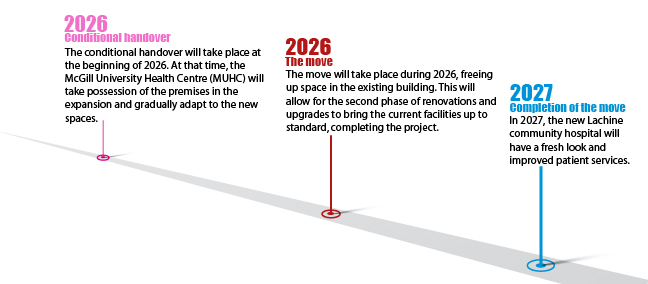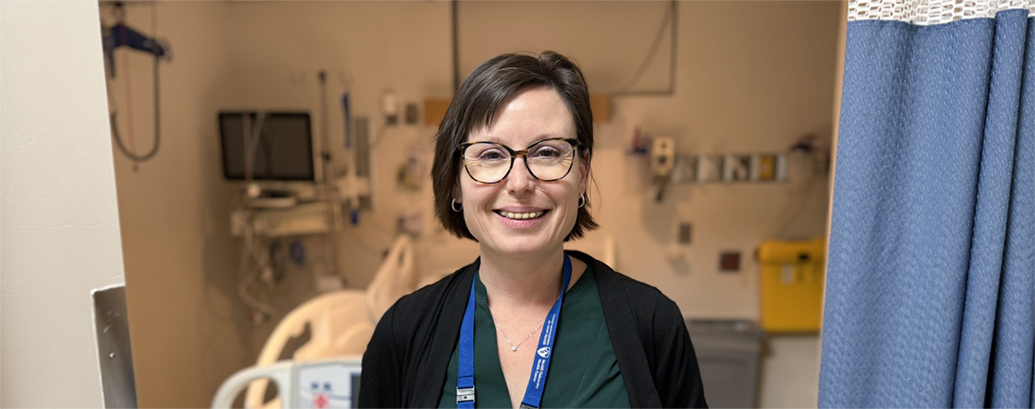Lachine Hospital: A hospital serving its community
What is a community hospital?
“The simplest answer is that it is a hospital that serves a targeted community,” says Myriam Ménard, Associate Director of Lachine Hospital and Camille-Lefebvre CHSLD. In fact, this community corresponds to the population of Lachine, Dorval and part of the southwestern part of the island of Montreal. “Since it serves a well-defined area, the hospital is able to listen to its community and offer care that meets the needs of its population, drawing on the strengths it has developed over the years,” she adds.
“Given the aging population, we will also welcome many patients who require long-term follow-up for chronic illnesses,” she explains. “In the medium term, we are also aiming for greater community involvement. This was a defining characteristic of the hospital in the past, and we want it to be the case again,” confirms the associate director. This openness will benefit not only the hospital’s patients but also those at the CHSLD Camille-Lefebvre, which already has well-developed recreational activities.
An example :
Every year, the hospital organizes Men’s Health Day, where people can walk in without an appointment for tests, including prostate cancer screening. The Lachine Hospital is the only one within the MUHC to host this kind of day. This is an excellent example of its mission as a community hospital.
Opportunities for growth
An interesting fact: Lachine is a community hospital within a university centre, and as such contributes to the training of medical residents and nurses and to the development of innovative projects. “Lachine is the MUHC’s pilot site for evaluating REZUM treatment, a non-invasive treatment for benign prostatic hyperplasia. This will help reduce the number of patients treated with invasive procedures,” explains Myriam. “So there are innovations taking place in Lachine that benefit the entire MUHC.”
The new Referral Portal for requests for first appointments is another example. Intended for all MUHC sites, it was first implemented in Lachine. “This is the kind of win-win project that is made possible by our connection to a university health centre.”
What are intermediate care services?
Another key characteristic of a community hospital is that services are primarily provided by family doctors. Intermediate care is provided by general practitioners and nurses who have received training in critical care.
The hospital will have an intermediate care unit with around six beds, managed by general practitioners who have completed a residency in intensive care. This model is common in community hospitals in Quebec. In fact, a network of general practitioner intensivists facilitates the sharing of information and best practices. Both doctors and nurses are trained to handle critical care situations. They can also count on the support of a team of respiratory therapists, pharmacists, physiotherapists, nutritionists and social workers.
The general radiology services are comprehensive, and medical and surgical support covers the core specialties. Finally, conventional mechanical ventilation is also available. “The hospital is able to accommodate any patient requiring urgent care,” says Myriam. “However, if a patient needs ultra-specialized care, for example in traumatology or neurology, we will stabilize them and transfer them to the most appropriate location based on their condition. This is the advantage of having a solid service corridor and certainly a guarantee of safety for the people of Lachine”.

A true transformation
The modernization project will enable the hospital’s infrastructure to be upgraded. In the emergency department, patients and nurses will be placed in separate areas, as is the case in the majority of contemporary emergency rooms. There will also be a plaster room and trauma rooms. In intermediate care, patient monitoring will be optimal. Patient rooms on the upper floors will be private, each with its own bathroom. The specimen collection centre will be fully transformed and connected directly to the laboratory by a system of pneumatic tubes.
“Our hospital will rival the most modern facilities and its potential for growth will be immense. The Lachine Hospital will be able to carry out its community mission in a state-of-the-art environment that is fully adapted to the needs of patients,” concludes Myriam.
Click on the image below to read this article in PDF.
2.jpg)
